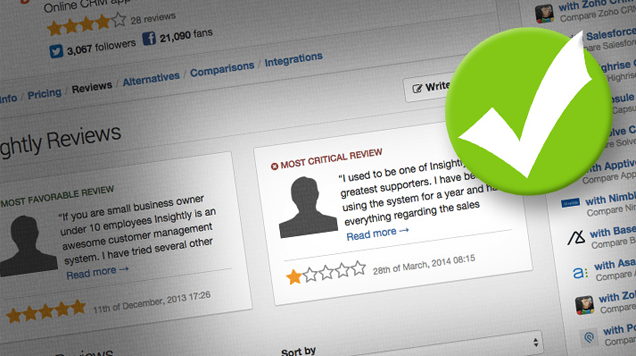Product reviews are a hot commodity. For ecommerce businesses, they are indispensable.
A few years ago, who would have thought that a few stars and a couple of remarks about a product could have such an atomic effect on a business?
Today, product reviews are the fuel that drives the engine of ecommerce. They catalyze sales, establish trust, and boost revenue. The need of the hour is more reviews.
The Power of Product Reviews in Ecommerce
Labelling product reviews as a “fuel” or “catalyst” is not an exaggeration. Entire ecommerce algorithms–I’m looking at you, Amazon–are formulated to increase the rank and visibility of products with the right mix of natural, positive, and detailed product reviews.
If your product has zero reviews, it engenders mistrust and loss of sales. If your product has exclusively five-star reviews, it raises eyebrows and invites suspicion. If your product has lengthy and stellar reviews by high-authority reviewers, it generates more visibility and sales.
The complex and wild world of consumer reviews is bewildering and confusing. Trying to understand the complexity of the systems and the dark algorithms that govern them can be overwhelming.
The brass tacks issue is really quite simple: To successfully sell a product, you need more product reviews.
Here’s why:
- 63% of customers are more likely to purchase from a site that has product reviews.
- Sites with product reviews and Q&As have a 105% higher likelihood of making sales.
- Customers who view product reviews and Q&As spend an average of 11% more than customers who do not view the reviews and Q&As.
- Product reviews are considered 12 times more trustworthy than manufacturer product descriptions.
On average, product reviews produce an 18% increase in sales.
(Statistics source)
The bottom line is pretty stern: Product reviews can make or break a business.
Thus, the question that most ecommerce sellers are asking is this: How can I generate more reviews for my product? (And please let them be positive reviews!)
Let’s talk tactics.
Method 1: Provide outstanding customer service.
The first method is the most effective, and it’s ridiculously simple: Provide unparallelled, kick-ass, outstanding, unprecedented, over-the-top killer customer service.
Simple, yes. Easy? Heck, no.
The problem with top tier customer service is that it’s expensive, unwieldy, and agonizingly elusive. But it’s the only way. In order to get those products reviewed, you have to make the reviewers–i.e., your customers–very pleased.
The quality of your product is, of course, important, but the way that you treat your customers is exceedingly more important.
I’ve built several businesses on the power of reviews. I often introduce new clients through my webinar funnel. These customers are blown away by the service and feel compelled to leave glowing reviews. I don’t ask for testimonials as much as I spontaneously receive them.
Happy customers leave the best product reviews.
Method 2: Ask for reviews in a follow-up email.
Once the customer has received the product, opened it, and used it, hit them with a review request.
There are two critical ingredients to this request:
Time it right. A few days post-sale is perfect. Some service providers will automate this process and provide impeccable timing based on shipping dates.
Ask politely. Usually, an outright please review us! is not advised. Your main concern is the customer’s satisfaction. That’s the point of your email. A subtle “Your review would be appreciated” as a by-the-way comment is just as effective.
Method 3: Give away or discount your product in exchange for a review.
This is, far and away, the most popular method of gaining reviews.
Since reviews are an online marketing currency, it makes sense to allocate some of your marketing budget to them. No, you’re not buying reviews, but you are providing free or discounted products in order to invite more reviews.
This general strategy has plenty of applications, and I’ll recommend its various iterations in some of the points below.
Method 4: Reach out to top reviewers.
Reviews are easiest to gain on Amazon. Part of the reason for this is that Amazon has more than 200 million customers, so someone is likely to give you feedback.
Plus, Amazon provides a list of their top reviewers. You can contact these reviewers directly, give them a free product, and ask for a review.
- Hall of Fame Reviewers
Top Reviewers
Method 5: Reach out to users who have purchased similar products.
Most ecommerce sites show you what other customers have purchased.
For example, Amazon displays a product carousel featuring “Customers Who Bought This Item Also Bought.” Choose items on this carousel that are similar to yours, and scroll down to see who reviewed them.
If you ask these reviewers to review your product in exchange for a free product, they are more likely to do so. Already, they’ve proven that they 1) want the product, and 2) will leave a review.
Method 6: Reach out to niche bloggers.
Niche bloggers are some of the most review-ready people on the market. Many bloggers have created entire businesses around reviewing products and bringing in affiliate cash or advertising space.
The upside is that not only do you get your product reviewed on your site, but you also get online discussion, social interaction, a link, and some referral traffic.
There are risks, of course. Professional blog reviewers aren’t afraid of devastating a product with a negative review if they think it’s deserving.
Make sure you hone in on your niche. Use a site like Blogrank to find niche blogs that publish relevant information.
Method 7: Ask your tribe what they think.
Asking for reviews can be a turnoff. But asking for opinions is quite another matter.
Most consumers are more willing to share an opinion than they are to provide a “review.”
The only difference is a change in wording. The result is the same. Ask people, “What do you think of [product]? Tell your story here,” and link to a place that allows them to leave a review.
Method 8: Ask for reviews on social media.
Social media users are likely to be product reviewers. In fact, some of the most withering and powerful product reviews are going down on Twitter and Facebook, not on your website.
Tap into the social stream, and solicit reviews. If you don’t ask, you don’t receive.
I recommend searching for #productreview and similar hashtags. Often, you’ll encounter a community of eager reviewers who exchange reviews for discounts or free products. This is a good place to begin your search for social media reviewers.
Method 9: Get help.
If you need help, get it. Product reviews are that important.
You can use platforms such as CustomerLobby to help you generate reviews across the web.
Or if you’re selling physical products, you can take advantage of Amazon to generate customer trust and revenue. You can do this by listing them on Amazon as a seller and get honest reviews using platforms such as HonestSociety.
Warnings and parting Shots
Plenty of people are willing to sell you reviews for a few bucks.
Don’t do it. Don’t buy reviews. It’s unwise, a bad idea, a no-no, unethical, etc., etc.
It seems quick and smart, but it’s also playing fast and loose. This is a clear risk-outweighs-reward proposition.
Final Thoughts
You need product reviews. If you’re lucky, reviews will come pouring down like manna in the wilderness. If you’re smart, however, you’ll make your own luck through strategic requests and innovative approaches.
All you need at first is a trickle of reviews. When you get those first few reviews, something begins to change–your product increases in rank, gains visibility, improves legitimacy, establishes trust, and starts to take off.
You’ll get more reviews, which leads to even greater sales, which spawns even more reviews, and so it continues.
What is your best method for generating product reviews?
author: Neil Patel
source: Inc.com
To Complete
GOOGLE: Best practices for bloggers reviewing free products they receive from companies
1. Use the nofollow tag where appropriate
2. Disclose the relationship
3. Create compelling, unique content





